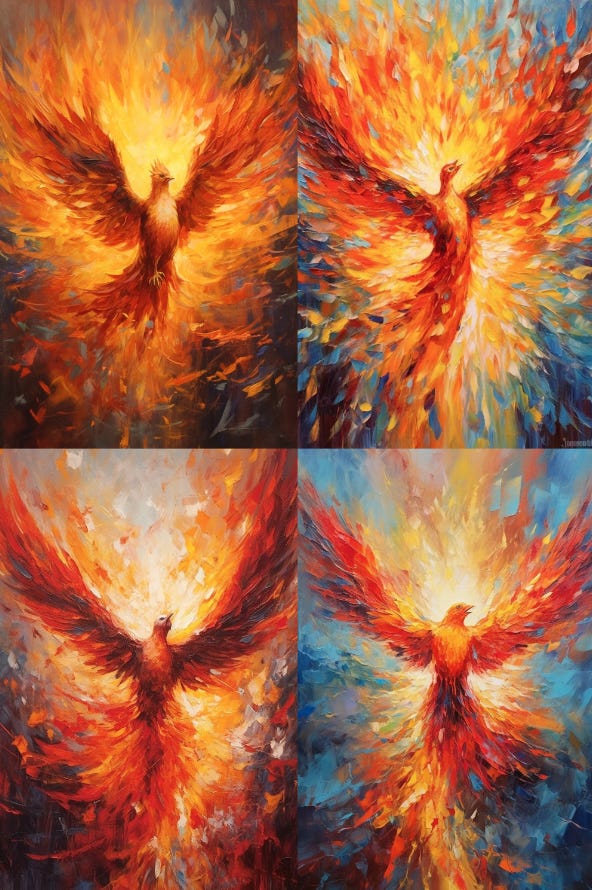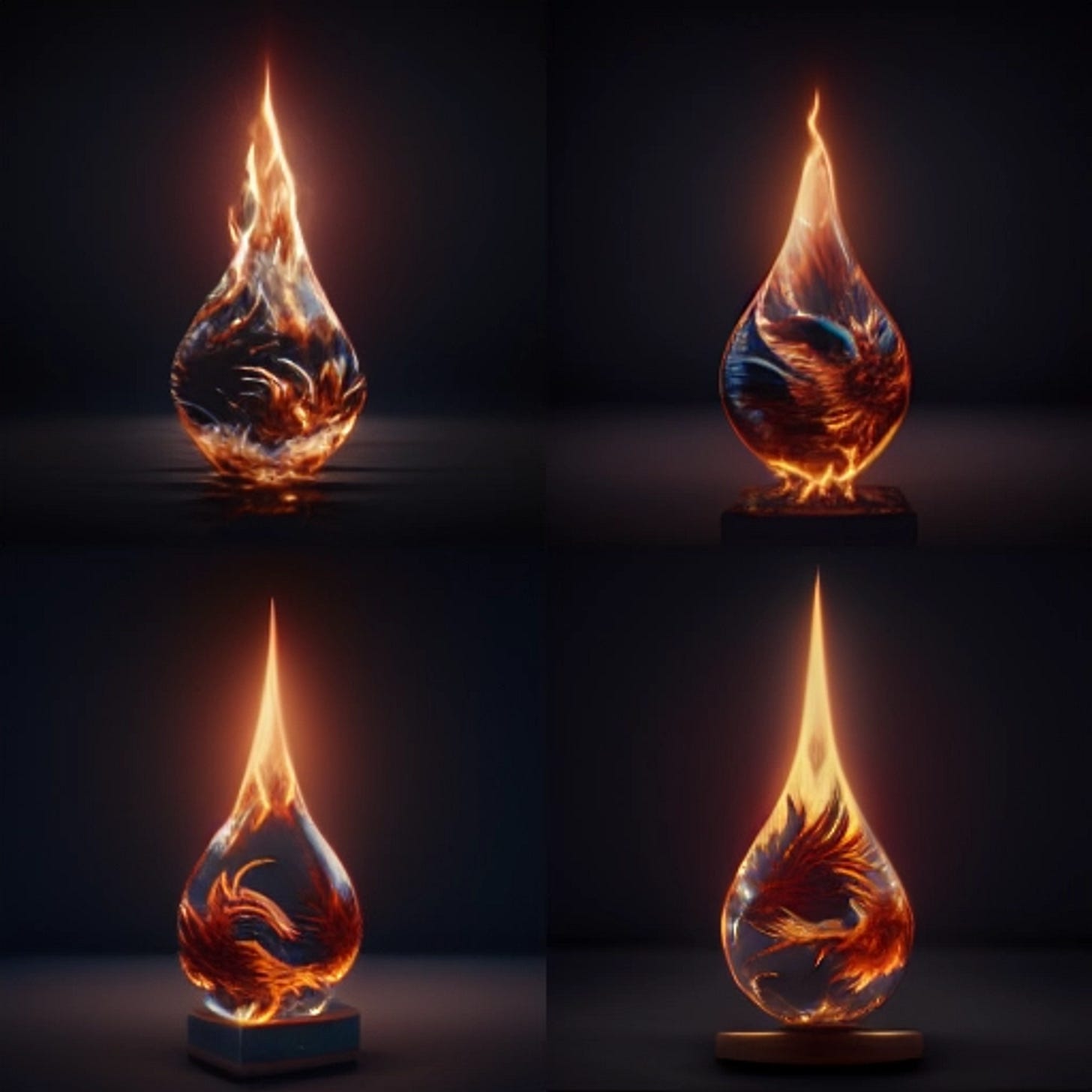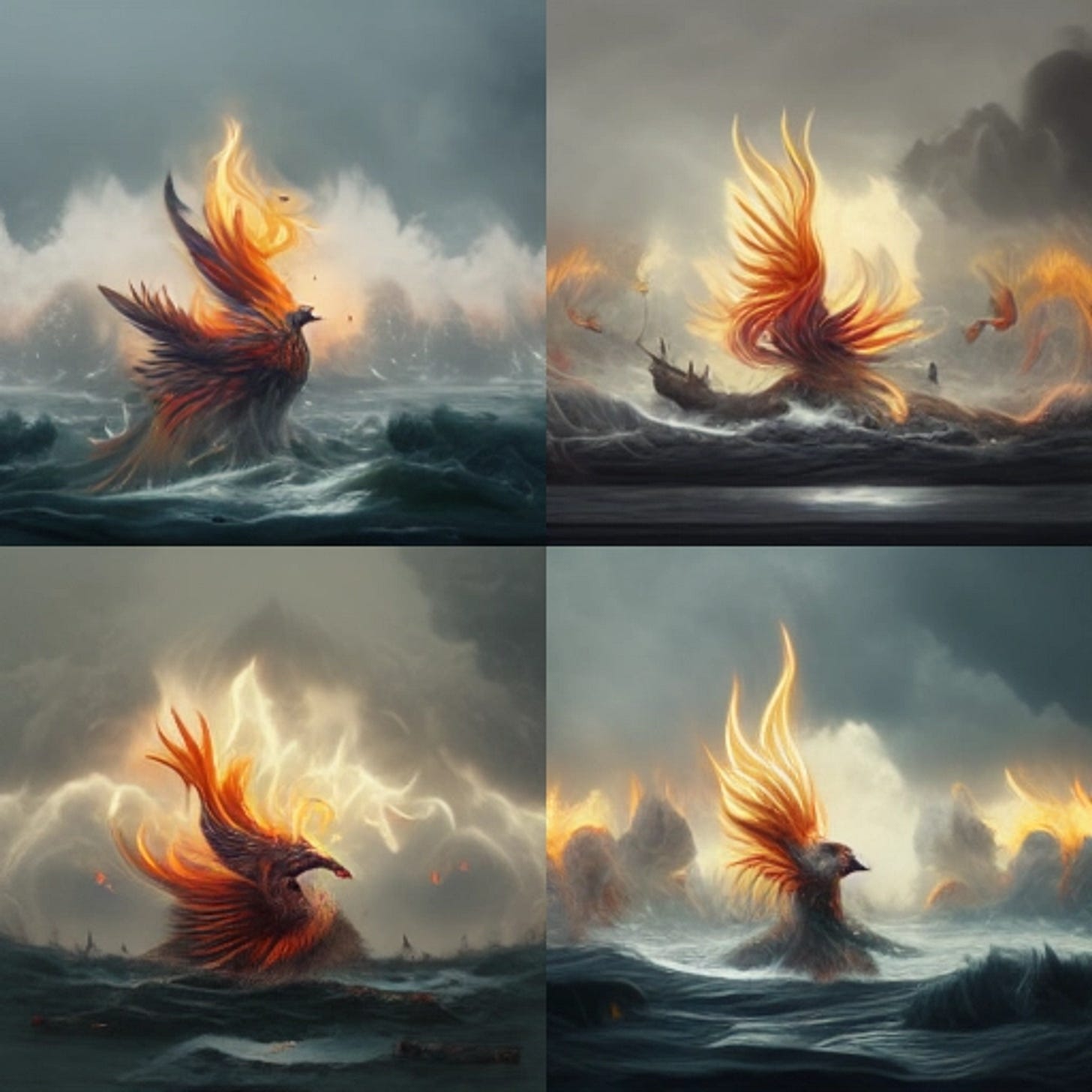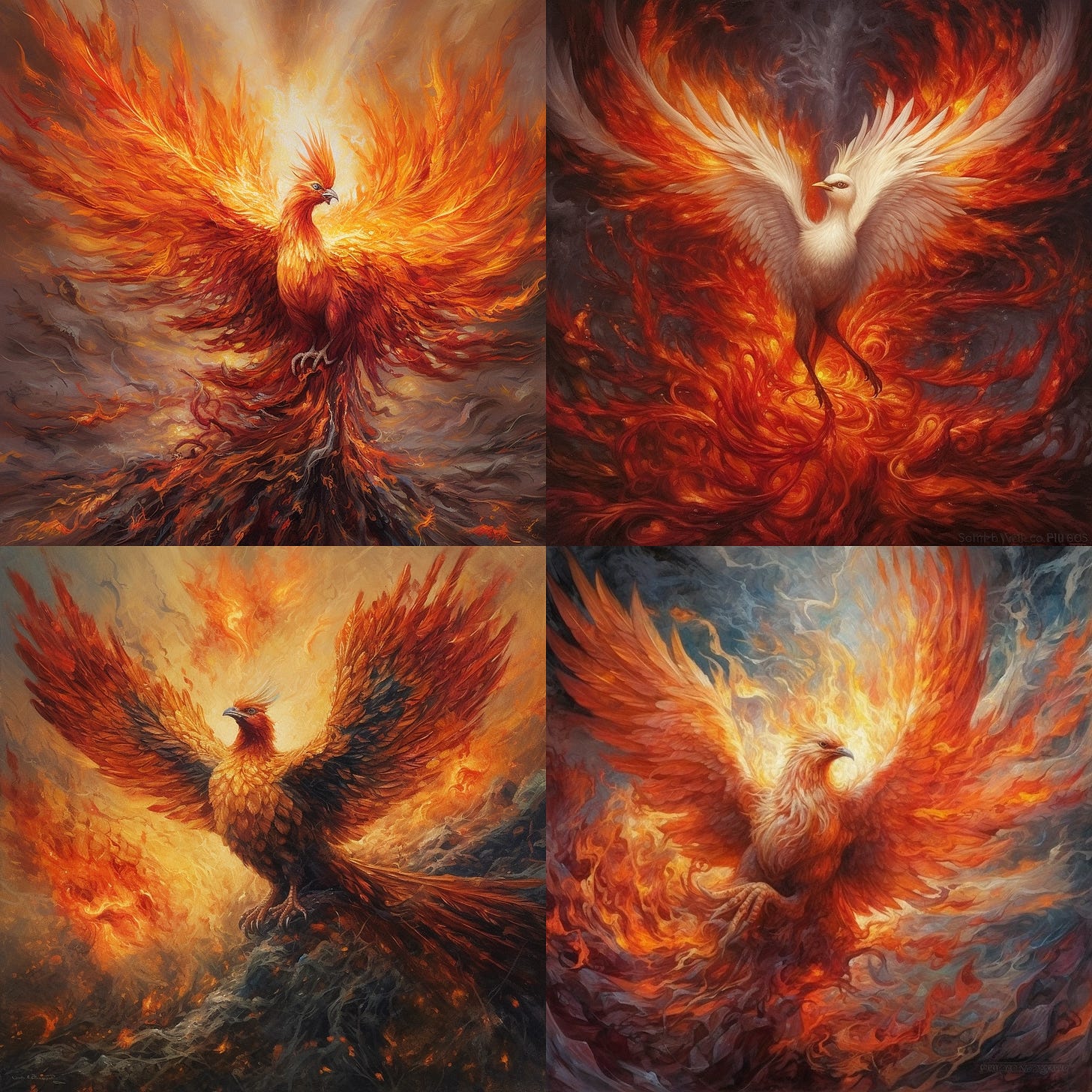Note: this article is too long for email. If you’re reading this as a subscriber and want to read the whole thing, make sure to check it out from the web link.
Is AI Art Really Art?
Every week somewhere on social media, I’m seeing incredible work being poured out by AI artists, along with arguments from others about whether or not it counts as “art,” sometimes with a fair amount of vitriol.
Thankfully, we have a precedent as to whether or not AI art counts as art.
That precedent is photography.
If you believe photography is an art, and AI art isn't, then I implore you to consider why you're rejecting AI generated art, and how it's different than photography. This article might help with that.
If you don’t believe photography is an art, then read on, maybe I’ll hit two phoenixes with one very long article. (That’ll be funny later.)
A Known Art: The Process of Photography
Let me walk you through history and process, here, first. (I don't really like talking about history though so this will be real short like. 🤣)
In the 1800s, photographers struggled to be recognized as artists, because they weren't painting. Kodak probably didn't help matters with their marketing - “You press the button, we do the rest."
It was too easy. They weren't DOING anything. (Supposedly.)
It took a long time before people started to see photography as art. And in the meantime, photographers were coming together to create art challenges and shift the perception of what it meant to be a photographer.
Fast forward to digital. (See, I have no patience for the past. 🤣)
When digital photography first came out, there was a lot of push back that it wasn't "real" photography. REAL photography had a darkroom. It had PROCESS. Most people probably don't have a whole lot of experience with darkrooms, but they know the photographer's in there DOING something.
And of course, along came software to help grow the expression of the photographer. Notably, Photoshop has transformed what you can do with a photo.
But I'm making this sound like all of the work of photography comes after the shot is taken, so let's clear that shit up right now.
When you pick up a camera to take a photograph, you can just point and shoot. That's one option.
Or, you can consider some variables. What's your angle to the subject? How high off the ground are you? What's the lighting like? What else is in the shot, do you need to change your framing? Is there motion being captured that needs to be considered, then how's that shutter speed? What's your f-stop, do you want to shift your depth of field? Do you maybe want to overexpose it on purpose?
All of these considerations are part of the art of photography, part of expressing your artistic vision. And they all happen before any buttons have been pressed.
When I was working at Yellowstone for the summer, my parents were visiting and we'd pulled over to take a photo. We were standing along the edge of a field with a bunch of bison, and numerous other people were lined up along roughly the same spot taking photos.
My dad (also a photographer) looks around, and quietly says, "every one of these people here, they each just took a very different photo - even though they're all standing in the same spot."
Before and after the press of that button, art is happening.
A Headless Phoenix: The Process Of AI Art 8 Months Ago
So. Now let's look at AI generated art.
First and foremost, it's not "just a collage" (... which, btw, is also art). AI generated art is a rendering, based on algorithm and mathematical models, after training on millions of different pieces of art.
(And yep, there's ethical considerations here as to whether or not this initial training is stealing. That’s a different post. For my tl;dr, I believe this is theft only in the same way humans "steal" when they learn from the art around them, practice replicating and eventually creating something new, and overall make decisions about how they want to express themselves creatively. Can you get something that looks just like some existing art? Yeah, that’s forgery. We’ve had that for a while too.)
Okay so let's move on to the process of creating AI generated art.
Sure, you can just press a button. Just like you can in photography.
And also just like photography, there's an incredible amount of space for creative expression.
Since that may be hard to see without an example, let’s walk through one.
One of my litmus tests for the AI art generators is to see how well I can make a phoenix. Specifically, I want a phoenix image where the bird is on fire, rising out of the ocean, facing the camera.
When I first started playing with Midjourney … okay well, my very first “phoenix” attempt looked like this:
Ahem.
I quickly figured out that the “half-fire half-water” bit was not going to work.
Now if you’re not already familiar, here are the types of things AI artists are considering when they go to create a prompt for their artwork:
keywords (the subject matter)
styles (this word is carrying a lot of possibility: medium, lighting considerations, camera “settings, camera brands, lens focal lengths, artistic style, etc. Usually multiple are chosen)
chaos setting (level of abstraction)
resolution
aspect ratio
passing in an image URL in the prompt (kind of like a starting point, but…also not)
applying weights (which tells Midjourney where to assign importance)
words you want to filter out
That’s before you decide which image output you like and are going to continue to work on.
You know, this article could end here. That pile of considerations is exactly like what photographers do when they consider their photo before they take the shot.
But you know how I like a story, I’m not done yet.
I started messing with the prompt next.
I’m not going to walk you through the prompt choices at this stage, because quite frankly I don’t remember. I can do that in a minute for a different example.
For now, I just want you to see the progression. It’s not one and done. Each of these results had at least 20 other image generations to get from one step to the next:
Eventually, I got to here. Pretty cool, but still not what I wanted. …And also headless.

Notice that prompt is not “Phoenix half-water half-fire”. There was a lot of prompt shifting that I did to get from that initial water drop of fire feathers, to the one above. But we’ll go through that with last night’s example.
Phoenix Rising: The Process Of AI Art Today
So that was 8 months ago. Fast forward to last night. I see on Twitter that 5.1 is released and maintenance mode is complete, and I head on over to check it out.
One of the release notes for Midjourney 5.1 was that 5.1 would be more “opinionated” and would be “MUCH easier to use with short prompts.”
Phoenix time!
This time I’ll walk you through the prompt changes, too. There aren’t too many, because I’ve learned a lot about how to prompt, and the prompts are getting easier to do, too. But I also wanted to start with as little of a prompt as possible to see what would happen, so you get kind of a sneak peak into the development of a prompt from a very trim starting place.
Just like in other art forms, practicing with prompts informs the prompt choices artists make as they learn. Which means some of the AI artists out there who can throw down an incredible prompt and get results right away, are practicing their artistic craft.
Right, so, let’s look at this.
First attempt, as listed in the caption: “Prompt: a phoenix rising from the ashes, oil painting, exquisite detail --v 5.1 --s 750”
Not bad, bottom left is interesting. But it still feels like it’s trying to make it look like a real bird.
Previously, adding “firebird” to “phoenix” had helped make it a little more unreal, so I added that. I also thought maybe “exquisite detail” was making it look like an angry dove, so I got rid of that. Also added “cinematic” because sometimes that gives a little more of a sweeping scene.
Nope, still a bunch of angry chickens.
This time, I went ahead and added an aspect ratio to make it be landscape, and told it to go ahead and be abstract.

So did I mention it was at least midnight at this point? 😅 You may have noticed, that ain’t landscape. But I’m on a roll now with some cool imagery, particularly top right.
I really like that, and it could be the beginning of a win for me, but it’s still not quite what I wanted.
I ran a few more iterations of all of the prompts I had tried so far (including some that were actually landscape 😅), because - especially when you’re using minimalistic prompts - there’s a roll of the dice on Midjourney’s side. But they were all staying pretty similar, so I made some more changes.
I had also completely left out the ocean, which was a huge part of what I wanted originally.

Alright we’ve got an angry dove, an angry eagle, and an angry rooster, but bottom left is looking promising.
There isn’t the symmetry that I wanted yet, though, so I threw that in.

Bottom left. That’s the one I was looking for.
… In reality, I still want to make this in a different style, and will probably keep trying. The image I have in my head has a vivid, video-game, animated look to it that I haven’t gotten yet. But this one gives the feeling that I wanted to achieve, and it’s far better than the headless wonder from 8 months ago.
There’s more I could do next.
I could pull this into Photoshop to start working on bringing out more of the blues, or cleaning up the upper right side where there’s kind of a gap in the wing that I might not want to keep.
Midjourney can create variations. After creating an image, you can generate new versions to work with. I could do that, and use those to create a subtle (or not subtle) animation
I could pull this into a totally different AI tool, and create an effect that makes the fire start to move behind the bird and along the top of the wings
I could use a tool in Midjourney that blends two images together …
In fact for shits and giggles let’s try that. Here’s the Phoenix blended with one of the not-floating glass spheres from last night.
Yeah, those are weird😆. Top ones have potential to me, I could see where that leads.
This is another part of this process - being able to select individual images, and work with those, generating variations, or uploading them back into Midjourney as a guide for where the next image should go.
This process I went through included a lot of creative expression in ways that are incredibly similar to photography, as I detailed in the beginning of this article. So many parallel considerations when composing a photograph, as well as when processing the image afterwards.
Photography and AI Art Are Both Art
Hopefully you can see now, that the presumption that the AI artist “isn’t doing anything except pushing words together” lacks understanding of the larger process.
And ironically, after all this, how complex the task is has nothing to do with whether or not its art.
This article (hopefully) offers understanding of the work that does go into producing AI art.
But AI art can also be fast, and still be art. Just like photography can. Just like painting can be throwing paint cups at a wall and still be art.
I shouldn’t have to prove that there’s the potential for complexity, in order for something to qualify as an expression of someone’s artistic vision.
“Art” is not about the time it takes to create. It’s not about the difficulty level. It’s not about whether or not a tool has automated skills that were previously only available through a more manual process.
Art is the expression of imagination. It is the expression of emotion. It is the expression of vision.
Tools are just part of the process.
P.S.
In case you’re wondering, here’s what “Phoenix half-fire half-water” looks like now in v5.1.
Upper left is incredible right out of the gate, still have an angry chicken bottom left. But all of these are far cry from that burning feather I started with 8 months ago.
And also none of these are what I want from that prompt yet, either.
I’ll let you know when I get it.












